Abstract
A pigeon's responses were reinforced on a variable-interval schedule on one key; and, concurrently, either a multiple or a fixed-interval schedule of reinforcement was in effect on a second key. These concurrent schedules, conc VI 3 (mult VI 3 EXT) or conc VI 3 FI 6, were programmed with or without a changeover delay (COD). Because the COD provided that responses on one key could not be followed by reinforced responses on the other key, responding on one key was not likely to accidentally come under the control of the reinforcement schedule on the other. When the COD was used, the performances on each key were comparable to the performances maintained when these interval schedules are programmed separately. The VI schedule maintained a relatively constant rate of responding, even though the rate of responding on the second key varied in a manner appropriate to the schedule on the second key. The mult VI 3 EXT schedule maintained two separate rates of responding: a relatively high rate during the VI 3 component, and almost no responding during the EXT component. The FI schedule maintained the gradually increasing rate of responding within each interval that is characteristic of the performance maintained by this schedule. The concurrent performances, however, did include certain interactions involving the local characteristics of responding and the over-all rates of responding maintained by the various schedules. The relevance of the present findings to an inter-response time analysis of VI responding, a chaining account of FI responding, and the concept of the reflex reserve was discussed.
Full text
PDF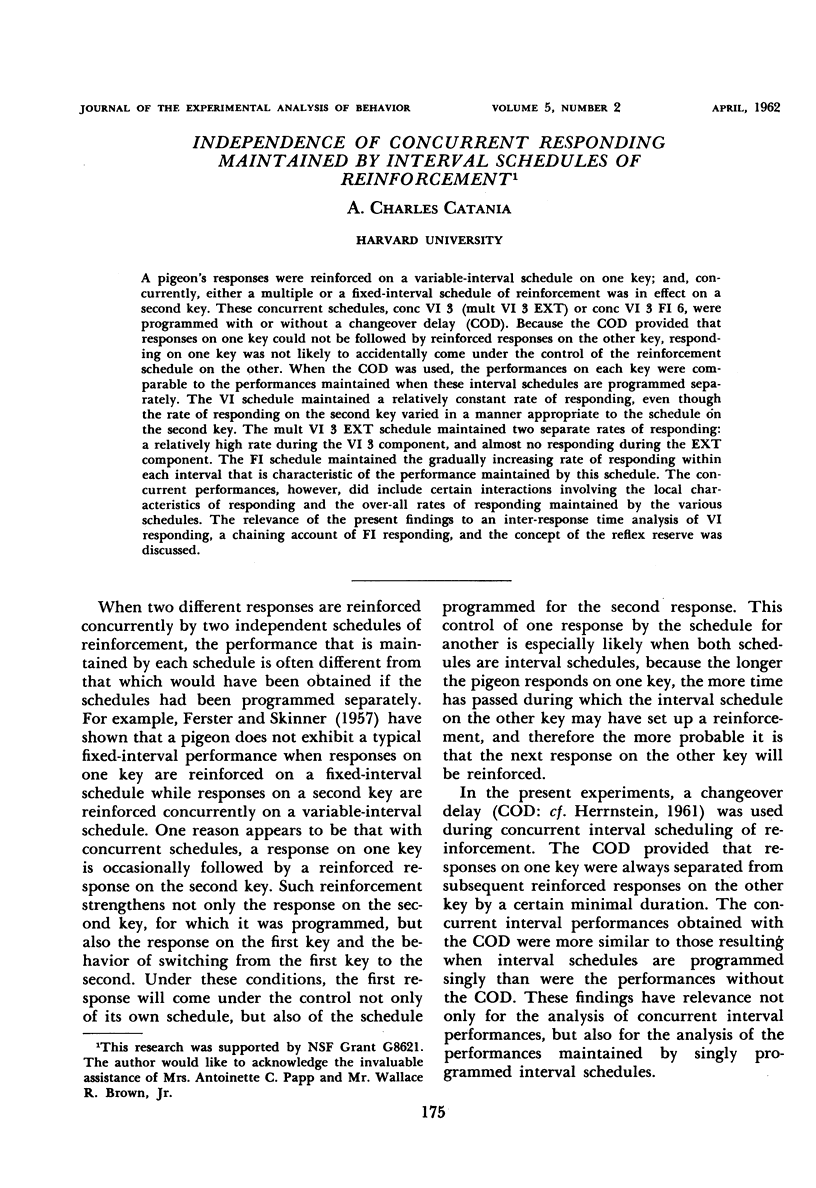
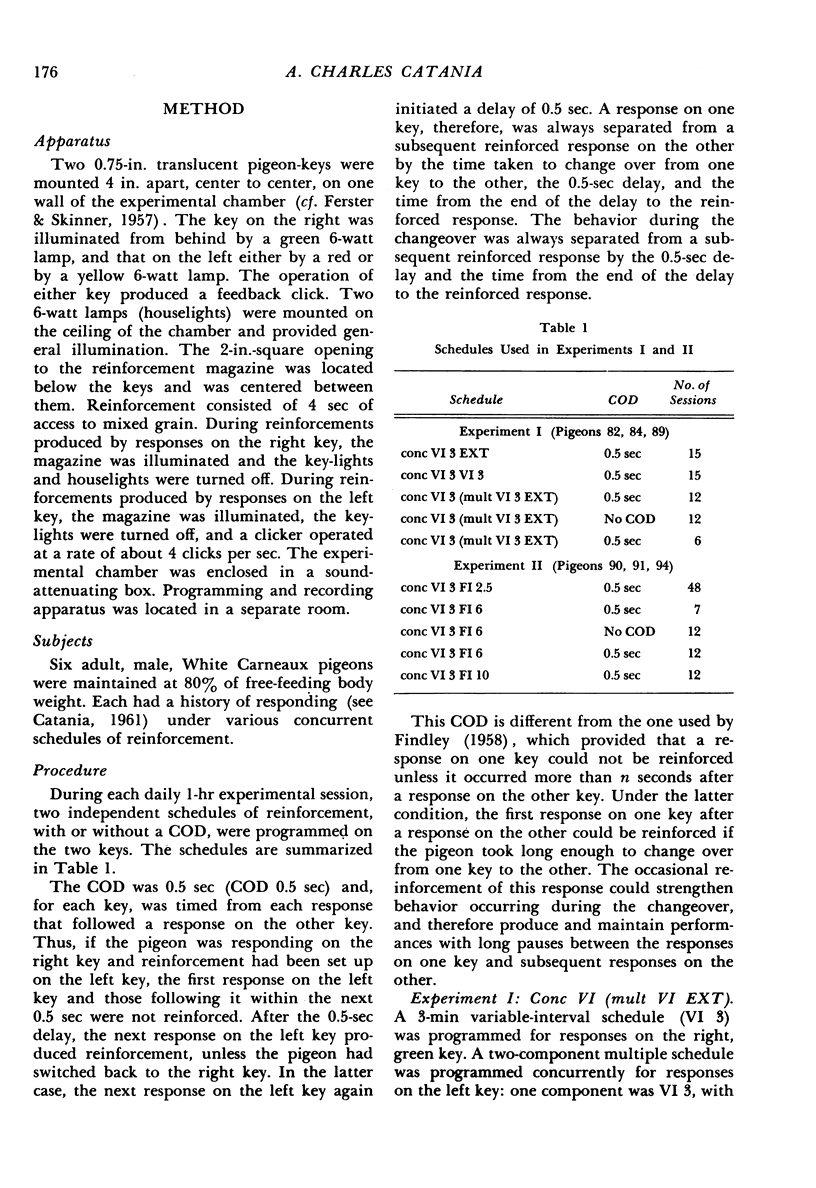
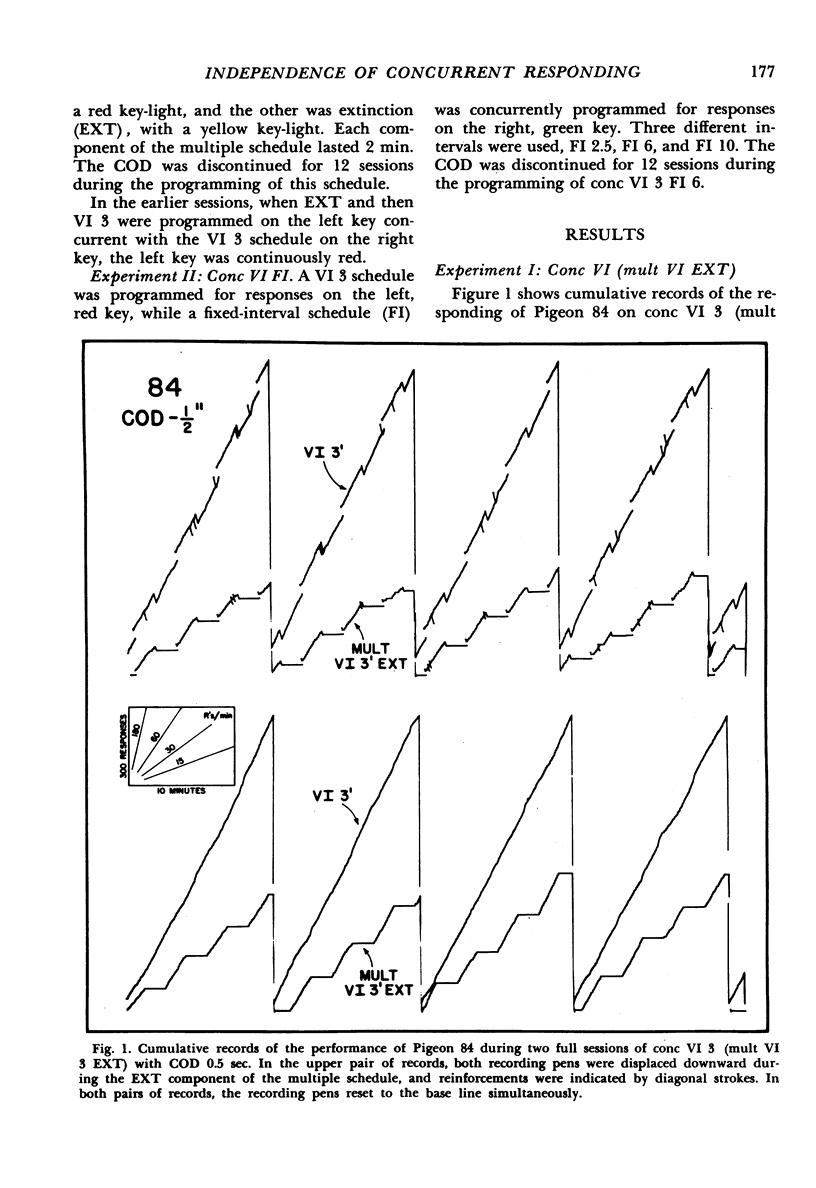
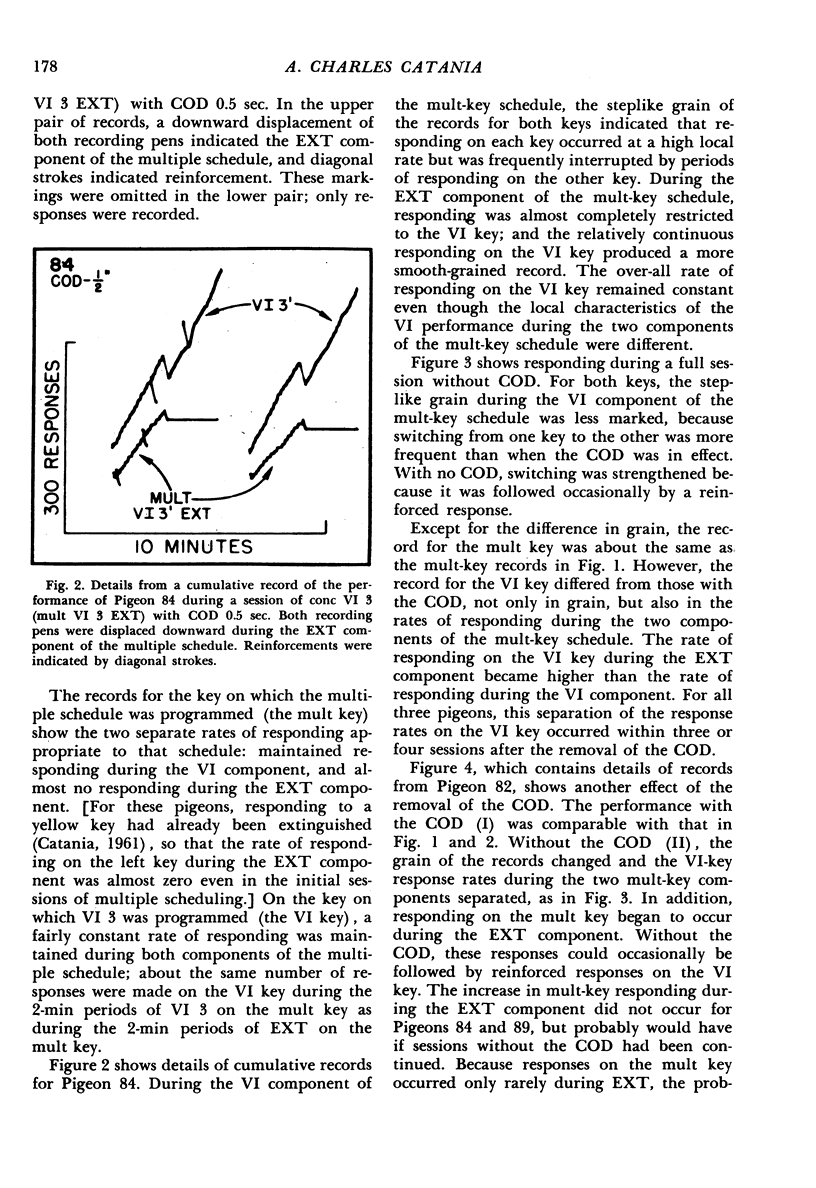
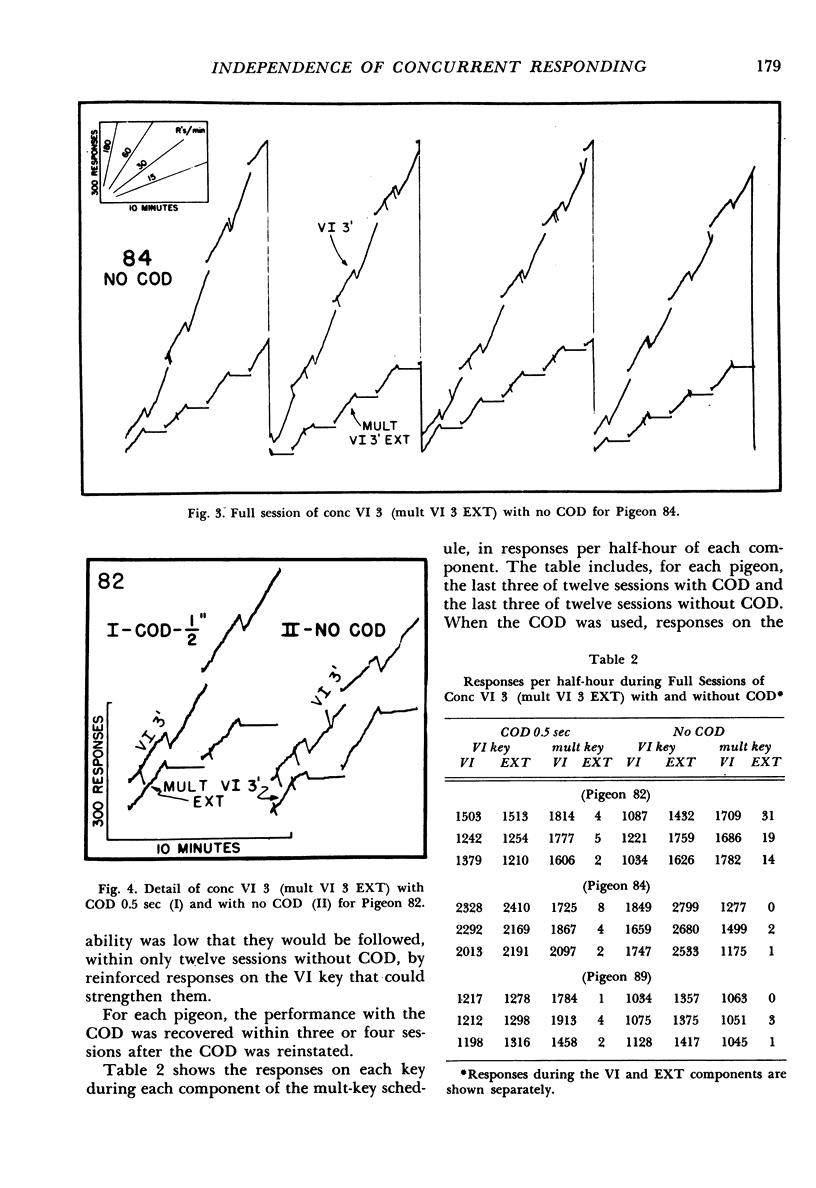
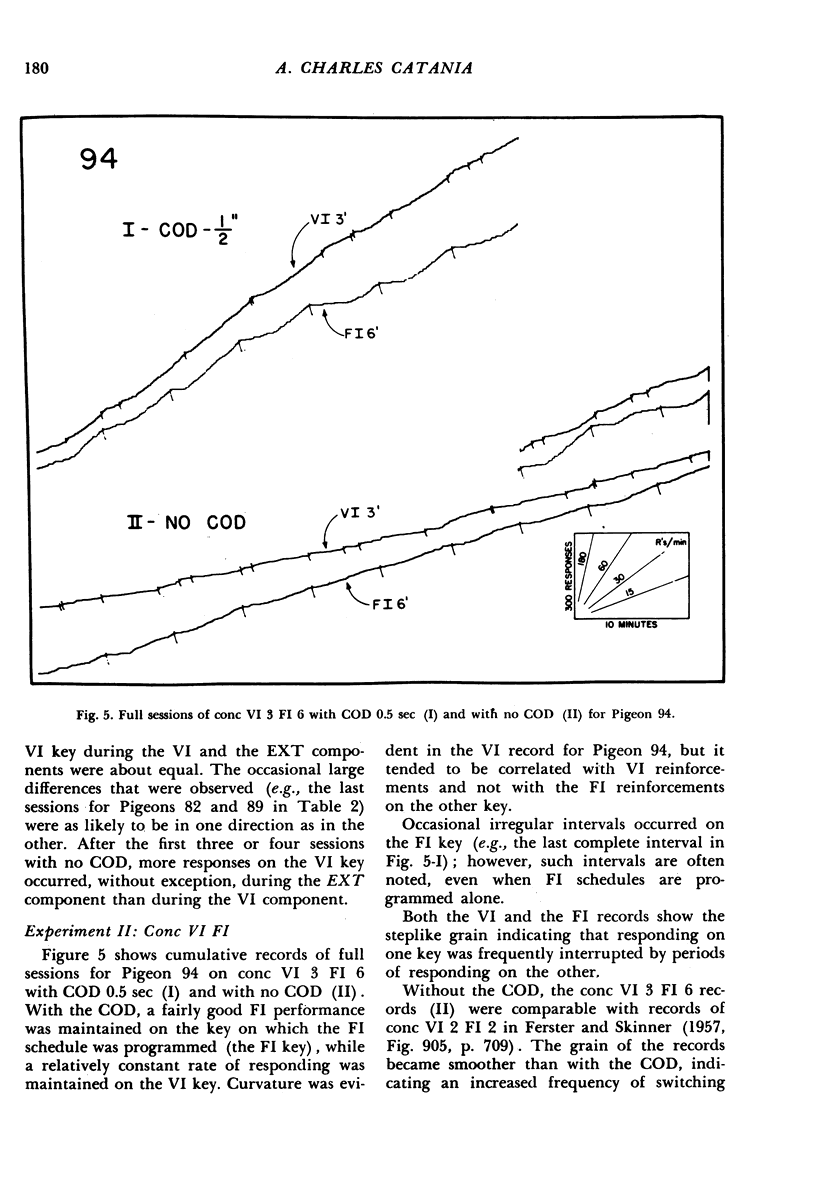
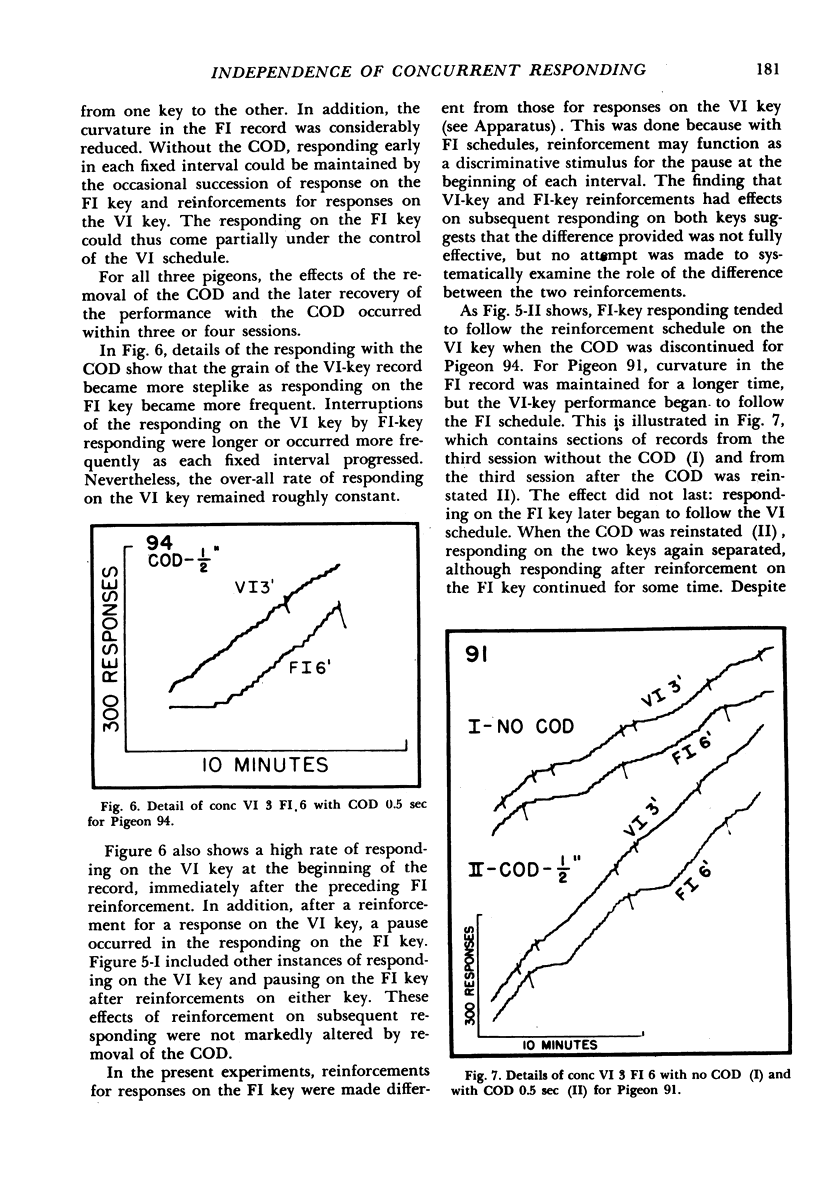
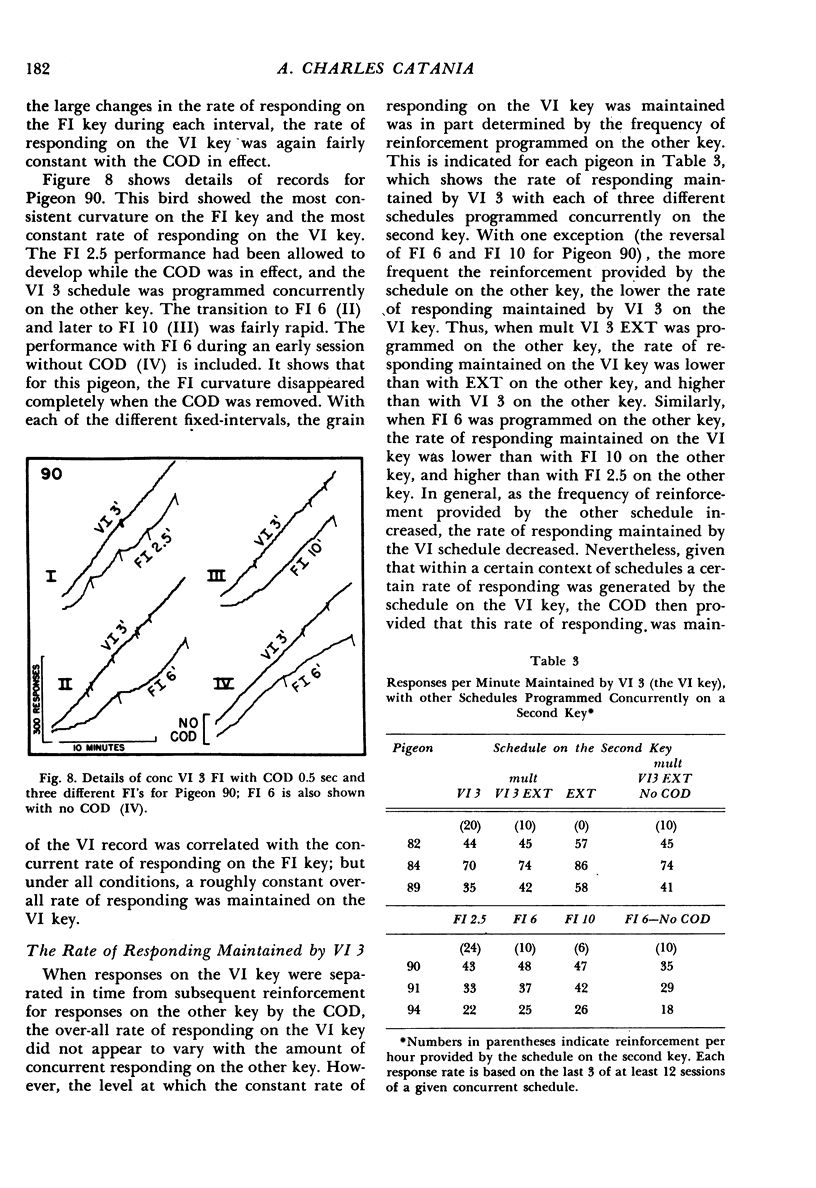
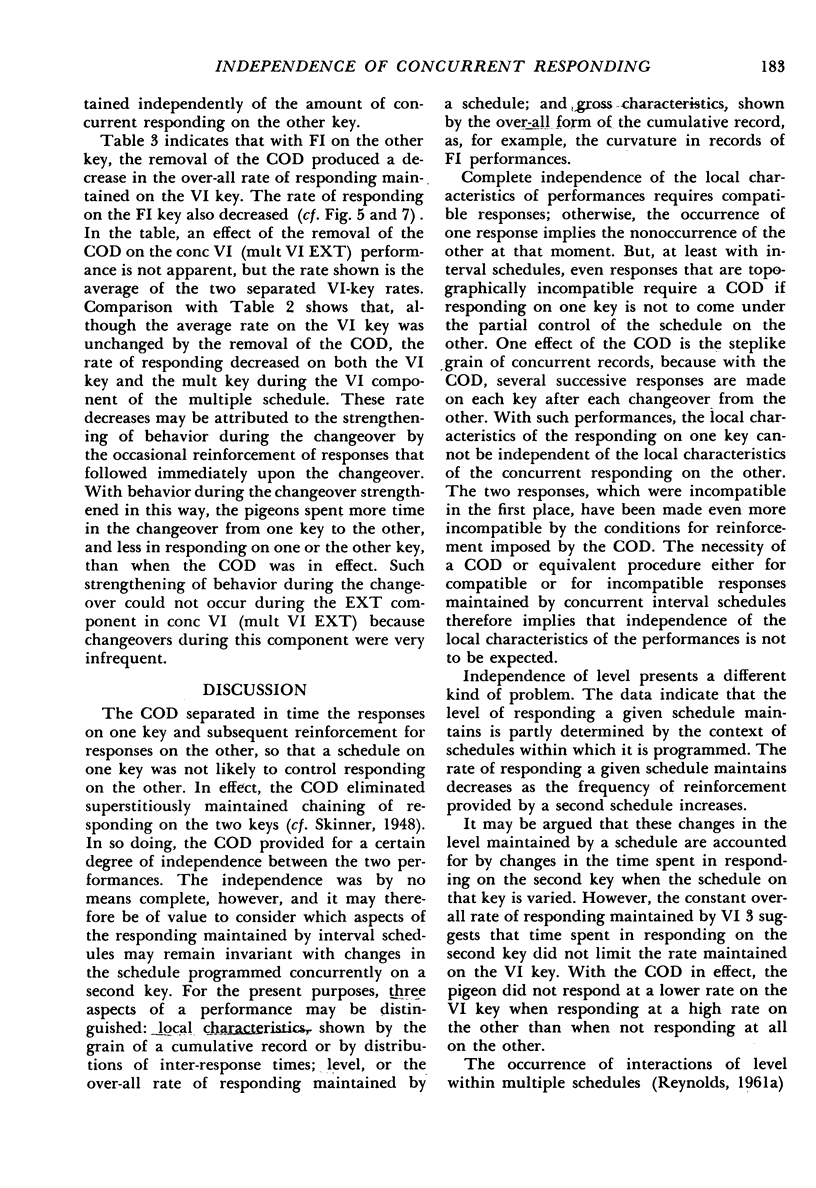
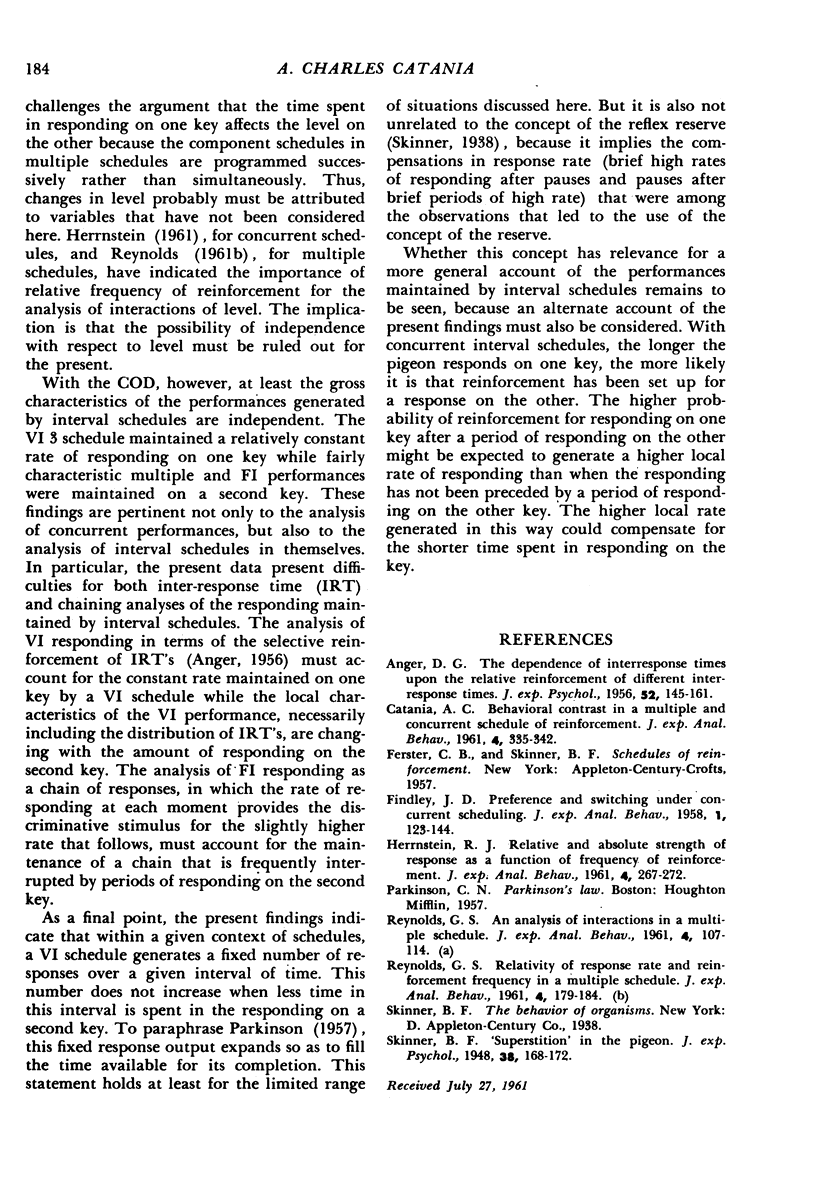
Selected References
These references are in PubMed. This may not be the complete list of references from this article.
- ANGER D. The dependence of interresponse times upon the relative reinforcement of different interresponse times. J Exp Psychol. 1956 Sep;52(3):145–161. doi: 10.1037/h0041255. [DOI] [PubMed] [Google Scholar]
- CATANIA A. C. Behavioral contrast in a multiple and concurrent schedule of reinforcement. J Exp Anal Behav. 1961 Oct;4:335–342. doi: 10.1901/jeab.1961.4-335. [DOI] [PMC free article] [PubMed] [Google Scholar]
- Findley J. D. Preference and Switching under Concurrent Scheduling. J Exp Anal Behav. 1958 Apr;1(2):123–144. doi: 10.1901/jeab.1958.1-123. [DOI] [PMC free article] [PubMed] [Google Scholar]
- HERRNSTEIN R. J. Relative and absolute strength of response as a function of frequency of reinforcement. J Exp Anal Behav. 1961 Jul;4:267–272. doi: 10.1901/jeab.1961.4-267. [DOI] [PMC free article] [PubMed] [Google Scholar]
- REYNOLDS G. S. Relativity of response rate and reinforcement frequency in a multiple schedule. J Exp Anal Behav. 1961 Apr;4:179–184. doi: 10.1901/jeab.1961.4-179. [DOI] [PMC free article] [PubMed] [Google Scholar]
- Reynolds G. S. An analysis of interactions in a multiple schedule. J Exp Anal Behav. 1961 Apr;4(2):107–117. doi: 10.1901/jeab.1961.4-107. [DOI] [PMC free article] [PubMed] [Google Scholar]


